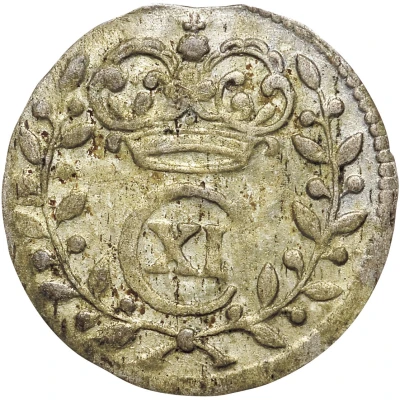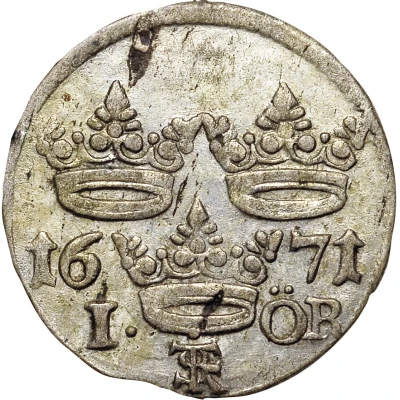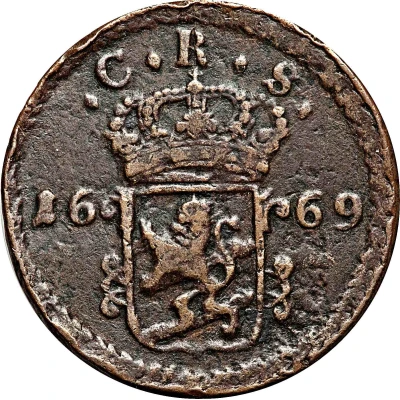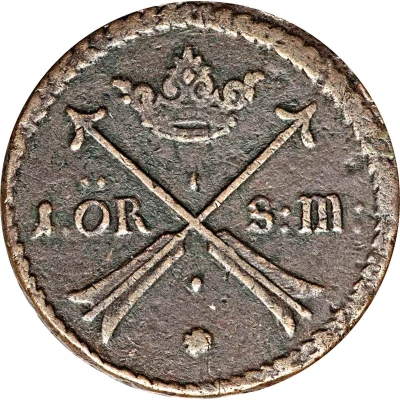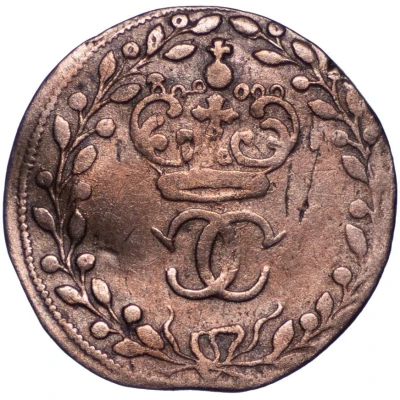
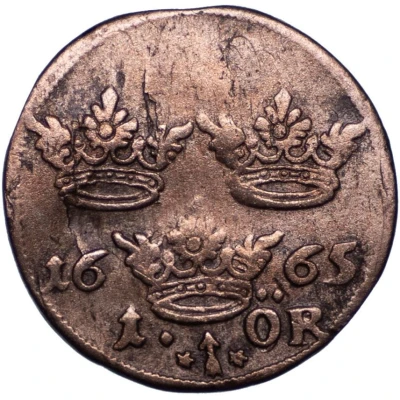

© Uppsala Universitet
1 Öre - Charles XI
| Billon (.313 silver) | 1.23 g | 18 mm |
| Issuer | Sweden |
|---|---|
| King | Charles XI (Karl XI) (1660-1697) |
| Type | Standard circulation coin |
| Years | 1665-1697 |
| Value | 1 Öre Silfwermynt (1⁄52) |
| Currency | Second riksdaler (1665-1715) |
| Composition | Billon (.313 silver) |
| Weight | 1.23 g |
| Diameter | 18 mm |
| Shape | Round |
| Demonetized | Yes |
| Updated | 2024-10-07 |
| Numista | N#182191 |
|---|---|
| Rarity index | 97% |
Reverse
The three crowns of Sweden dividing value and date.
Lettering:
16 65
I ÖR
Interesting fact
One interesting fact about the 1 Öre coin from Sweden, minted during the reign of Charles XI (1665-1697), is that it was made of Billon, an alloy of copper and silver, which was a common practice in Europe during that time period. The use of Billon in coinage was a way to stretch the limited supply of silver, while still maintaining the value of the coin. Despite being made of a base metal, the 1 Öre coin still held a significant amount of value, with its weight of 1.23 grams and silver content of .313. This coin is a fascinating example of how coinage has evolved over time, and how different materials have been used to create currency that is both durable and valuable.
